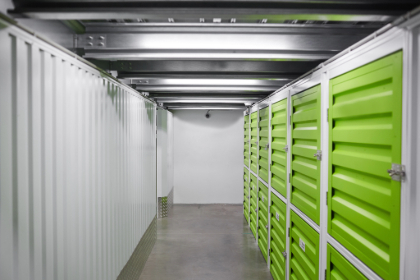Disaster Cleanup & Restoration
24/7/365 Emergency Service
Palm Desert Office: (760) 320-2128
Servicing Riverside County, CA

Don't let fall's sneaky humidity destroy your treasured belongings! Daniel's DKI in Riverside County reveals how to prevent humidity storage damage before disaster strikes your valuables.

Contact Daniel's DKI in Riverside County, CA, at (760) 320-2128 when humidity has already compromised your stored belongings. Our emergency restoration specialists understand that every hour counts when moisture threatens your irreplaceable documents, family heirlooms, and business assets.
As autumn settles in, the changing weather brings more than just colorful leaves and cooler temperatures. Fall humidity fluctuations create a perfect storm for storage disasters that can destroy your most valuable possessions. Understanding these seasonal changes is crucial for anyone storing documents, furniture, artwork, or sentimental items.
Understanding Fall Humidity Patterns
Fall weather creates unique humidity challenges that differ significantly from summer conditions. As temperatures drop, the air's ability to hold moisture changes dramatically. This creates condensation issues in storage areas that seemed perfectly fine during warmer months.
Morning dew becomes more frequent, and temperature swings between day and night increase moisture accumulation in enclosed spaces. Your storage unit, garage, or basement may experience humidity spikes that reach dangerous levels for stored materials.
The key problem occurs when warm, moist air meets cooler surfaces. This temperature differential causes condensation to form on walls, floors, and most importantly, on your stored belongings.
How Humidity Destroys Different Materials
Different materials react uniquely to humidity changes, and knowing these vulnerabilities helps you prevent humidity storage damage before it starts.
Paper and Documents
Business records, family photos, and important papers absorb moisture like sponges. Even slight humidity increases can cause warping, while prolonged exposure leads to mold growth and permanent staining.
Wooden Items
Furniture, antiques, and wooden boxes expand and contract with humidity changes. This movement creates cracks, joint separation, and warped surfaces that often require professional restoration.
Textiles and Fabrics
Clothing, upholstery, and carpets become breeding grounds for mold and mildew when humidity levels exceed safe thresholds. The musty odor that develops is often impossible to remove without professional treatment.
Electronics and Media
Computers, televisions, and storage devices suffer internal corrosion from humidity exposure. Even items that appear unaffected externally may have damaged internal components.
Call Daniel's DKI in Riverside County, CA at (760) 320-2128 for professional humidity damage assessment and restoration services. We've helped countless families and businesses recover from storage disasters, and we're standing by to protect what matters most to you.
The 48-Hour Danger Zone
Most people don't realize that humidity damage accelerates rapidly. Within 48 hours of exposure to high moisture levels, mold spores begin colonizing organic materials. This timeline makes early detection and intervention critical for successful recovery.
Professional restoration companies understand this urgency. When humidity damage occurs, immediate action can often save items that would otherwise be total losses. The longer moisture remains in contact with your belongings, the more extensive and expensive the restoration process becomes.
Warning Signs You Shouldn't Ignore
Smart storage management means recognizing humidity problems before they become disasters. Watch for these early warning signals in your storage areas:
Musty odors are often the first indicator of moisture problems. Even faint smells suggest that humidity levels have exceeded safe ranges for your stored items.
Condensation on windows, walls, or metal surfaces indicates excessive moisture in the air. If you notice water droplets during your storage visits, take immediate action to prevent humidity storage damage.
Visible mold growth appears as black, green, or white spots on surfaces. By this stage, professional intervention becomes necessary to prevent contamination spread.
Warped or swollen materials signal that moisture has already penetrated your belongings. Doors that stick, drawers that won't open, or papers that feel damp require urgent attention.
Essential Protection Strategies
Creating the right storage environment requires both preventive measures and ongoing monitoring. Climate-controlled storage units maintain consistent temperature and humidity levels, but they're not always available or affordable for everyone.
Moisture absorbers and dehumidifiers provide excellent protection for smaller storage spaces. Place these devices strategically throughout your storage area, focusing on corners and areas with poor air circulation.
Proper spacing between stored items allows air circulation that reduces humidity buildup. Avoid placing items directly against walls or floors where condensation commonly occurs.
Vapor barriers protect sensitive items from moisture contact. Plastic sheeting, moisture-proof containers, and sealed storage bags create protective environments for your most vulnerable possessions.
Professional Solutions Make the Difference
While prevention strategies help minimize risks, professional storage and restoration services offer the most reliable protection for valuable items. These specialists understand the complex relationship between humidity, temperature, and material preservation.
Professional facilities maintain precise environmental controls that homeowners and businesses can't replicate in standard storage areas. Investment in professional storage often costs less than replacing humidity-damaged items.
When damage does occur, restoration professionals have specialized equipment and techniques that can salvage items that appear beyond hope. Freeze-drying technology, controlled dehumidification, and antimicrobial treatments can restore documents, textiles, and other materials to near-original condition.




